Qingguo Zhou
MapExpert: Online HD Map Construction with Simple and Efficient Sparse Map Element Expert
Dec 17, 2024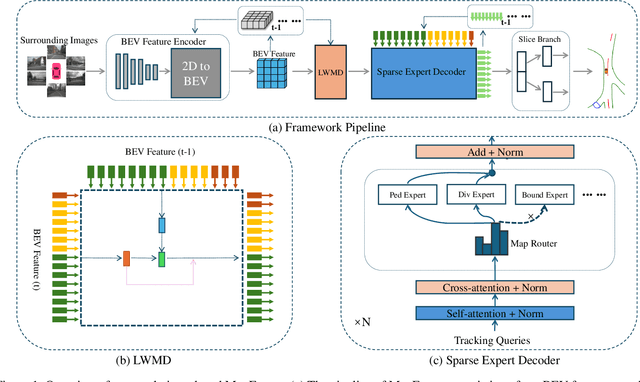



Abstract:Constructing online High-Definition (HD) maps is crucial for the static environment perception of autonomous driving systems (ADS). Existing solutions typically attempt to detect vectorized HD map elements with unified models; however, these methods often overlook the distinct characteristics of different non-cubic map elements, making accurate distinction challenging. To address these issues, we introduce an expert-based online HD map method, termed MapExpert. MapExpert utilizes sparse experts, distributed by our routers, to describe various non-cubic map elements accurately. Additionally, we propose an auxiliary balance loss function to distribute the load evenly across experts. Furthermore, we theoretically analyze the limitations of prevalent bird's-eye view (BEV) feature temporal fusion methods and introduce an efficient temporal fusion module called Learnable Weighted Moving Descentage. This module effectively integrates relevant historical information into the final BEV features. Combined with an enhanced slice head branch, the proposed MapExpert achieves state-of-the-art performance and maintains good efficiency on both nuScenes and Argoverse2 datasets.
DST-GTN: Dynamic Spatio-Temporal Graph Transformer Network for Traffic Forecasting
Apr 18, 2024Abstract:Accurate traffic forecasting is essential for effective urban planning and congestion management. Deep learning (DL) approaches have gained colossal success in traffic forecasting but still face challenges in capturing the intricacies of traffic dynamics. In this paper, we identify and address this challenges by emphasizing that spatial features are inherently dynamic and change over time. A novel in-depth feature representation, called Dynamic Spatio-Temporal (Dyn-ST) features, is introduced, which encapsulates spatial characteristics across varying times. Moreover, a Dynamic Spatio-Temporal Graph Transformer Network (DST-GTN) is proposed by capturing Dyn-ST features and other dynamic adjacency relations between intersections. The DST-GTN can model dynamic ST relationships between nodes accurately and refine the representation of global and local ST characteristics by adopting adaptive weights in low-pass and all-pass filters, enabling the extraction of Dyn-ST features from traffic time-series data. Through numerical experiments on public datasets, the DST-GTN achieves state-of-the-art performance for a range of traffic forecasting tasks and demonstrates enhanced stability.
Temporal fusion transformer using variational mode decomposition for wind power forecasting
Feb 05, 2023
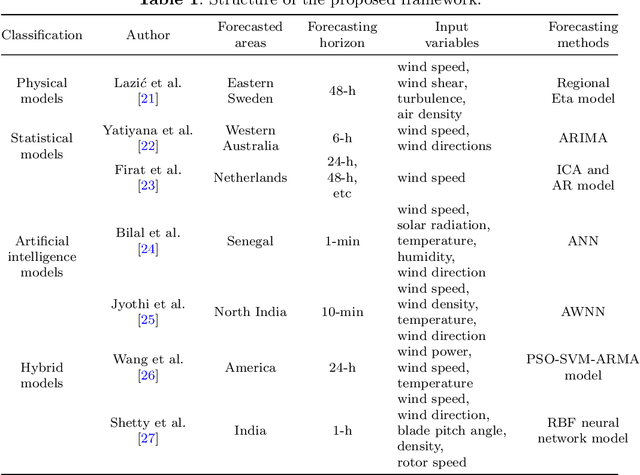
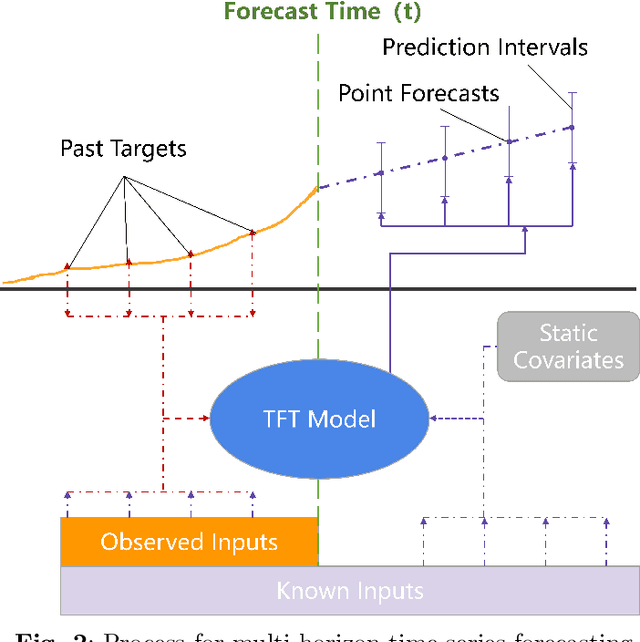
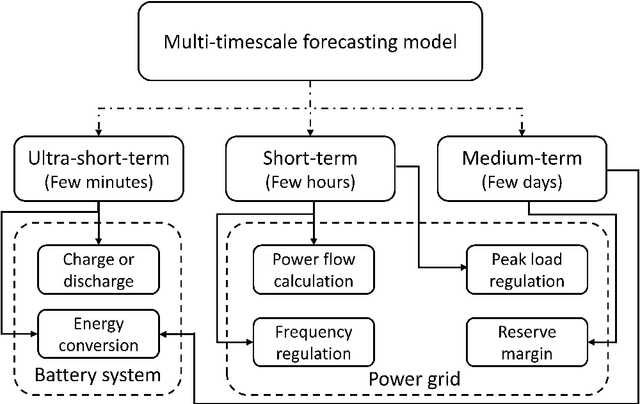
Abstract:The power output of a wind turbine depends on a variety of factors, including wind speed at different heights, wind direction, temperature and turbine properties. Wind speed and direction, in particular, have complex cycles and fluctuate dramatically, leading to large uncertainties in wind power output. This study uses variational mode decomposition (VMD) to decompose the wind power series and Temporal fusion transformer (TFT) to forecast wind power for the next 1h, 3h and 6h. The experimental results show that VMD outperforms other decomposition algorithms and the TFT model outperforms other decomposition models.
Day-Ahead PV Power Forecasting Based on MSTL-TFT
Jan 14, 2023Abstract:Energy demand is increasing dramatically as global urbanization progresses.Solar energy is a clean energy source with low production and maintenance costs.Accurately predicted PV generation is of great importance for grid integration.Recent day-ahead PV forecasting studies mainly include generation data decomposition, additional meteorological and equipment features, improvement and integration of ANN-based models.We proposed a MSTL-TFT method for day-ahead PV forecasting. The results are better than any of the other studies we have surveyed on day-ahead DKASC PV forecasting.
Forestry digital twin with machine learning in Landsat 7 data
Apr 02, 2022
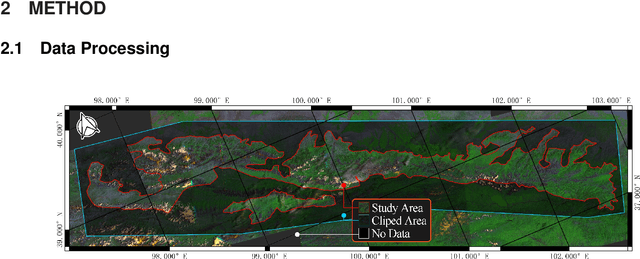
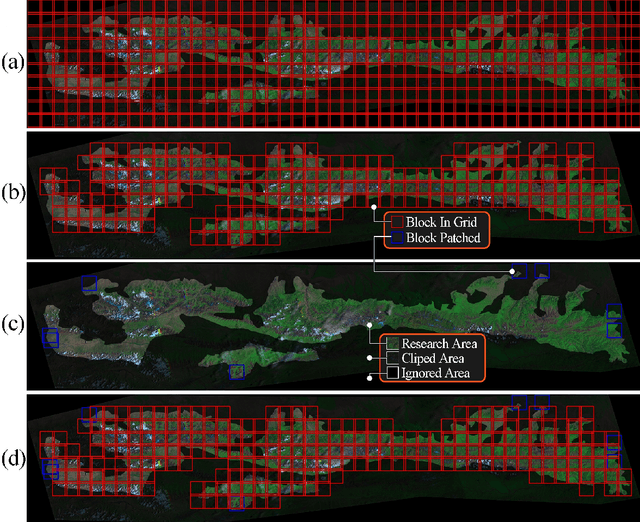
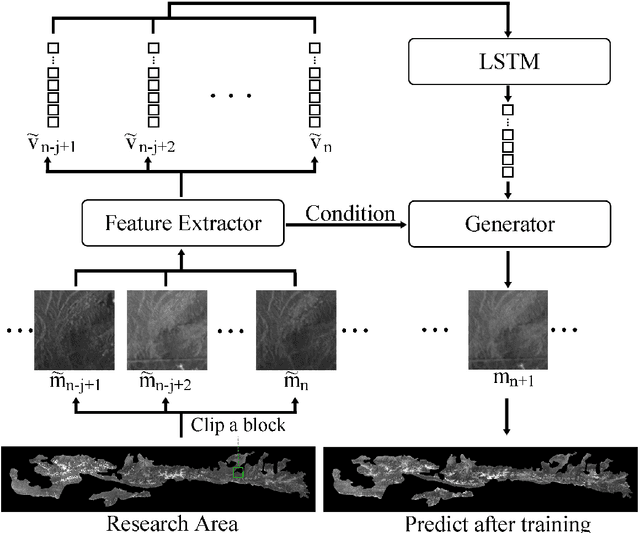
Abstract:Modeling forests using historical data allows for more accurately evolution analysis, thus providing an important basis for other studies. As a recognized and effective tool, remote sensing plays an important role in forestry analysis. We can use it to derive information about the forest, including tree type, coverage and canopy density. There are many forest time series modeling studies using statistic values, but few using remote sensing images. Image prediction digital twin is an implementation of digital twin, which aims to predict future images bases on historical data. In this paper, we propose an LSTM-based digital twin approach for forest modeling, using Landsat 7 remote sensing image within 20 years. The experimental results show that the prediction twin method in this paper can effectively predict the future images of study area.
Boundary Distribution Estimation to Precise Object Detection
Nov 02, 2021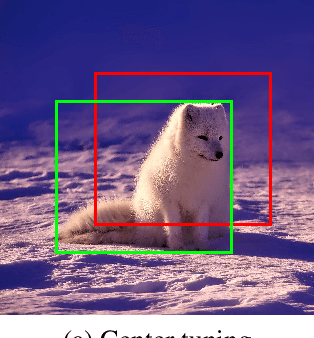

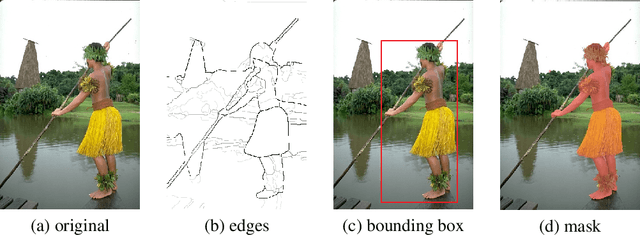

Abstract:In principal modern detectors, the task of object localization is implemented by the box subnet which concentrates on bounding box regression. The box subnet customarily predicts the position of the object by regressing box center position and scaling factors. Although this approach is frequently adopted, we observe that the result of localization remains defective, which makes the performance of the detector unsatisfactory. In this paper, we prove the flaws in the previous method through theoretical analysis and experimental verification and propose a novel solution to detect objects precisely. Rather than plainly focusing on center and size, our approach refines the edges of the bounding box on previous localization results by estimating the distribution at the boundary of the object. Experimental results have shown the potentiality and generalization of our proposed method.
A methodology of weed-crop classification based on autonomous models choosing and ensemble
Oct 28, 2020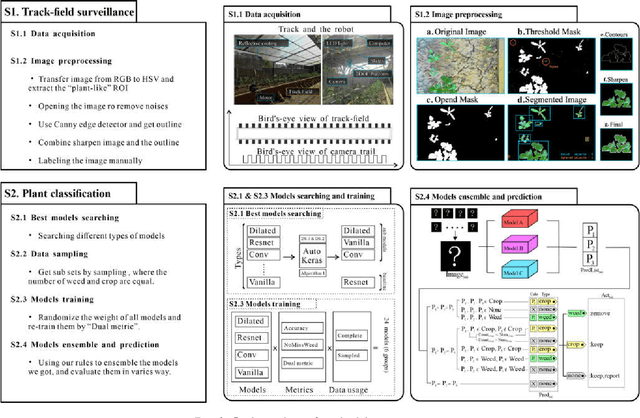
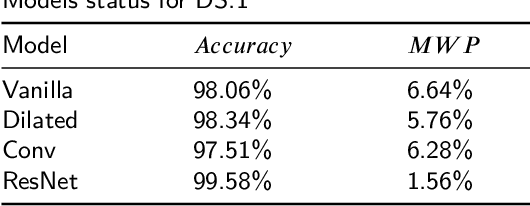
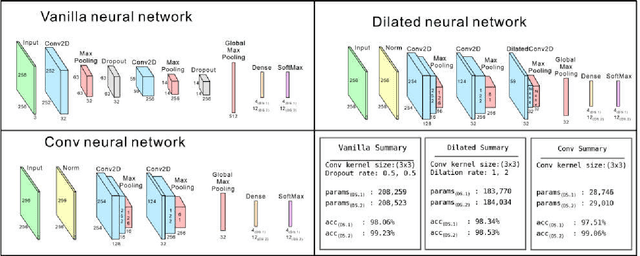
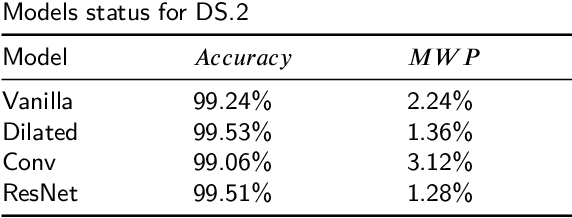
Abstract:Neural networks play an important role in crop-weed classification have high accuracy more than 95%. Manually choosing models and fine-tuning are laborious, yet it is indispensable in most traditional practices and researches. Moreover, classic training metric are not thoroughly compatible with farming tasks, that a model still have a noticeable chance of miss classifying crop to weed while it reach higher accuracy even more than 99%. In this paper we demonstrate a methodology of weed-crop classification based on autonomous models choosing and ensemble that could make models choosing and tunning automatically, and improve the prediction with high accuracy(>99% for both data set) in specific class with low risk in incorrect predicting.
 Add to Chrome
Add to Chrome Add to Firefox
Add to Firefox Add to Edge
Add to Edge